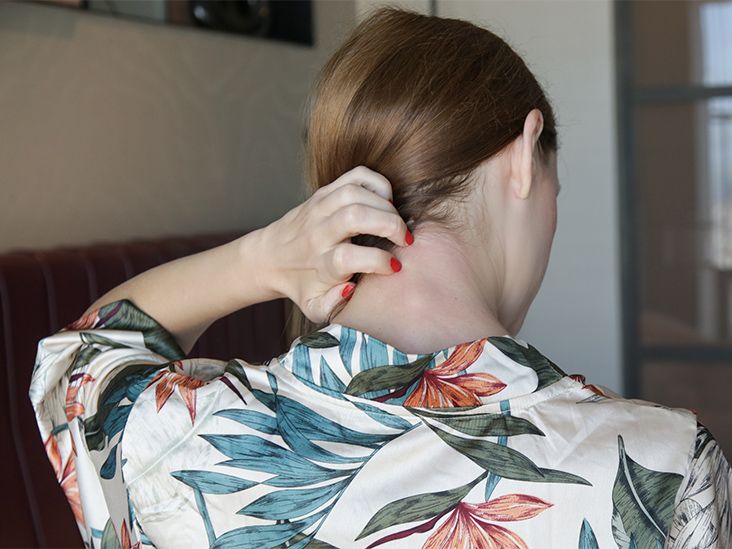Scalp psoriasis presents with dry, scaly, and flaky skin plaques that have borders. These plaques may sometimes resemble other conditions.
Psoriasis is an autoimmune skin condition that affects over
The most common symptoms include dry, raised, and scaly plaques, or patches, on the skin that may vary in color depending on your skin tone.
Research suggests that up to
Keep reading to see what scalp psoriasis looks like and to learn more about the treatments.
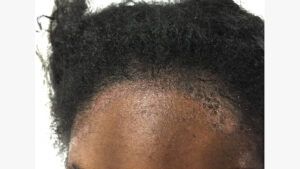
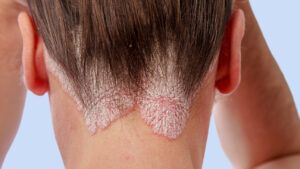
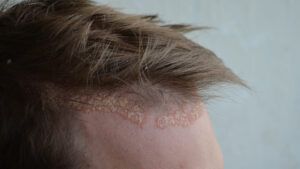
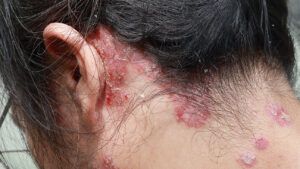
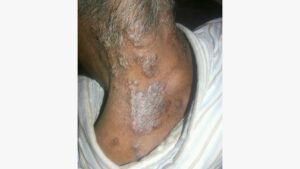
Scalp psoriasis causes a buildup of cells on the skin, which may cause skin plaques to develop on the scalp and other areas of the body.
In scalp psoriasis, these skin plaques typically affect your hairline and the back of your head. However, you may experience symptoms anywhere on your scalp, such as your forehead, neck, and ears.
These skin plaques are typically dry, raised, and flaky. You may also experience:
- silvery-like scales
- flaking that resembles dandruff
- itching, burning, or discomfort
- bleeding or temporary hair loss from scratching or removing the plaques on the scalp
Skin plaques may appear evenly on both sides of the scalp or affect most of your head.
On lighter skin tones, psoriasis typically appears as pink or red patches with silvery-white scales. On darker skin tones, psoriasis is more likely to appear as dark brown or purple patches with gray scales.
Scalp psoriasis vs. dandruff
Scalp psoriasis may sometimes resemble dandruff because they share several symptoms, such as:
- skin flakes on the scalp
- mild redness, itchiness, or dryness
However, dandruff doesn’t cause the thick, raised skin plaques with borders that are associated with psoriasis.
Treatment for scalp psoriasis may depend on several factors, such as the underlying cause and the severity of your symptoms.
Your treatment plan may include a combination of:
- over-the-counter medications, such as psoriasis and coal tar shampoos
- topical medications, such as corticosteroids, calcipotriene, and tazorac
- oral medications, such as acitretin (Soriatane), methotrexate, cyclosporine, and apremilast (Otezla)
- biologics
- Janus kinase (JAK) inhibitors, such as deucravacitinib (Sotyktu)
- phototherapy
- at-home remedies
If you develop symptoms of psoriasis, it’s best to speak with a healthcare professional like a dermatologist. They could provide a correct diagnosis and develop the best treatment plan for you.
Self-care tips
Several tips may help you manage your symptoms of scalp psoriasis:
- Follow a doctor’s instructions: Following your treatment plan is the best way to help treat scalp psoriasis. For example, you’ll need to know when to shampoo your hair so the medication works effectively. If treatments stop working or you notice any joint pain, let your doctor know.
- Avoid scratching or picking: You may experience large and silvery scales, but it’s important not to pick or scratch them, as this may lead to infection. They must be carefully removed.
- Clean the comb or brush: Combing or brushing may seem difficult, as these may irritate your scalp. Clean the comb before each use to help prevent infection, and consider talking with a doctor about any adverse effects.
If left untreated, scalp psoriasis may lead to temporary hair loss. This may be due to several reasons, such as:
- the condition’s effect on hair follicles
- too much scratching
- scalp damage
Hair typically grows back once scalp psoriasis is treated.
Consider speaking with a healthcare professional about ways to avoid hair loss if you have scalp psoriasis. You may need to avoid certain hair treatments or change your scalp psoriasis treatment plan.
What does psoriasis look like on your scalp?
Scalp psoriasis may cause scaly, raised, flaky skin plaques. They may develop on your scalp, around your hairline, behind your ears, or on your neck.
What is the fastest way to cure psoriasis on the scalp?
Treatment for scalp psoriasis will differ for each individual. The American Academy of Dermatology Association suggests topical corticosteroids are the most common and effective treatment that can be applied to the scalp.
What can be mistaken for psoriasis?
People sometimes mistake psoriasis for seborrheic dermatitis because they share similar symptoms. However, psoriasis is caused by an immune dysfunction, while seborrheic dermatitis is caused by a reaction to a yeast that lives on your skin. A healthcare professional can make a correct diagnosis.
Having scalp psoriasis can be a challenge at times. Treatment is usually effective and helps lower the visibility of your symptoms.
Ask your doctor about support groups in your area. The National Psoriasis Foundation can provide information about support groups, the condition, treatment, and current research.





